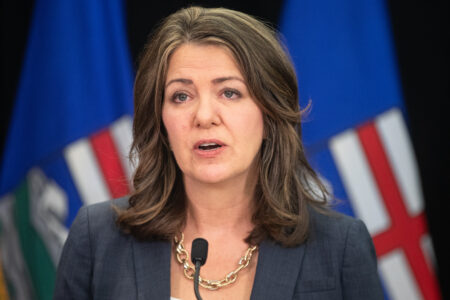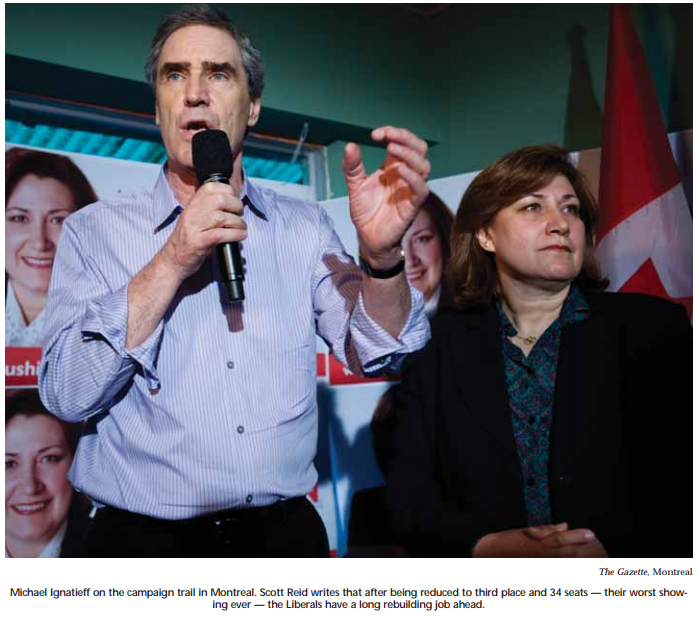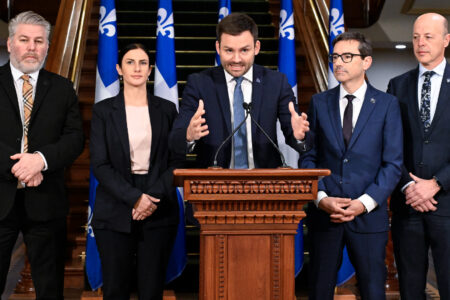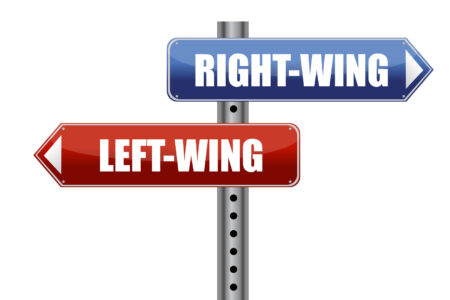
“Game changer” resides at the very summit of insipid terms used to interpret our daily politics. However, its application to the results of the May 2 federal election can hardly be condemned.
Parliament has been reshaped with a Conservative majority government, a vanquished Bloc Québécois and a historic movement of the NDP to the benches of the official opposition. The Liberal Party of Canada — once the grandest of all political institutions — has been reduced to historic lows. It garnered fewer than 19 percent of the votes cast, was reduced to a caucus of 34 and will now reside in the horse latitudes known as “third-party status” in the House of Commons, adrift in the Sargasso Sea.
If all that seems unremittingly bleak, it still leaves many additional challenges uninventoried.
Armed with firm control of both Houses of Parliament, Stephen Harper will soon set about removing the per-vote public subsidy that represents the Liberals’ most reliable source of revenue. In Parliament, the Liberal Party’s staffing and research budgets will be slashed deeply. Externally, it will be confronted with two constant foes intent upon provoking its extinction. Internally, it will be forced to endure a debate by those who advocate its euthanasia.
Most worrying of all, the Liberal Party faces a crisis of self-realization. It is a centrist party that no longer occupies any detectable place in the middle of the political spectrum. It is a brokerage party that now suffers a deficit as a result of competing groups and interests within its ranks. The party’s traditional hold over identifiable voting blocs — geographical and ethnic — has been eroded and, in some cases, erased.
It is, therefore, the very worst of times for the Liberal Party of Canada. Bowed, broke and beaten down, it now faces the truly intimidating task of rebuilding, renewing and reanimating itself. In this respect, three observations must remain top of mind for those who are dedicated to the recovery effort.
First, survival is not guaranteed. This harsh fact must be pinned to the wall of the Liberal Party’s virtual locker room, where it can serve as a stark reminder to all who pass. Any hint that success is inevitable must be actively fought. If there is to be a renewal, it will be as a result of constant hard labour, shrewd choices and, ultimately, some good fortune. Honest acknowledgement of their predicament is needed if the Liberals are to marshal the resolve needed to have even a chance at success.
Second, take the long view. If any Liberal harbours the hope of leapfrogging from third to first place and forming government in 2015, they should stay silent. A rigorous, careful progression is required that charts a course away first from irrelevance, then into official opposition and then, by decade’s end, back to government. In the cause of candour and rigour, the party must regard its renewal as a two-term effort.
Third, generational change is a must. The party’s rich history is no substitute for the energy and enthusiasm that would come from a new guard seizing control. As was the case in the UK’s Labour Party in the early 1990s, it is time for a team of new people, armed with new ideas, to take over the franchise. And to make over the franchise.
The most vital asset the Liberals enjoy, of course, is the Liberal brand itself. To be certain, it has been bruised over the years and battered by two particularly punishing consecutive election defeats. But if the last outing is any indication, the Liberal brand does enjoy at least the instinctive support of at least one in five voters — even when those Canadians are offered virtually nothing but the label itself from which to draw support.
Common to all these observations is a humility — an understanding that past glories offer no guarantees of breaking through in the future, and also a determination that every inch of progress will have to be earned, not inherited.
Humility is, however, a coin that has two sides. To the pundits and political foes who are prepared to declare the death of the Liberal Party of Canada, caution would be well advised. To assume it will simply roll over and choke out its last breath without resistance is at least as foolhardy as to assume its rebirth is a matter of manifest destiny. Moreover, even in the fresh glow of their new success, the Conservative Party and the NDP face challenges of their own that will require careful attention.
Moreover, all is not utterly lost for the Liberal Party. It retains some important assets from which a reasonable plan to forge forward can be assembled. It has a substantial base of members spread out across the country, although it may have a number of atrophied riding associations, and membership rolls may be littered with those who feel disengaged or even disaffected. But it has a base of activists and alumni upon which it can build organizationally and financially for the future.
It also has a parliamentary caucus that boasts genuine experience and ability. In holding the government to account and offering the critique necessary to create future conditions for change, the Liberal caucus should prove an important source of advantage.
The most vital asset the Liberals enjoy, of course, is the Liberal brand itself. To be certain, it has been bruised over the years and battered by two particularly punishing consecutive election defeats. But if the last outing is any indication, the Liberal brand does enjoy at least the instinctive support of at least one in five voters — even when those Canadians are offered virtually nothing but the label itself from which to draw support.
Before one can turn to talk of renewing the brand, however, it is first necessary to address the question of whether it ought to be preserved at all. Could a “unite what’s left” movement be this decade’s answer to the “unite the right” initiative of the 2000s? Advocates of this option argue that, at worst, 60 percent of the voting electorate appears to prefer some alternative to the current government. If progressive voters were to rally behind a single option, it stands to reason that success should follow, all other factors being equal.
But of course all other factors are not equal. As many have highlighted, Reform Party and Progressive Conservative Party members were not so much united in 2004 as reunited. That shared culture does not exist between the Liberals and the New Democrats.
The NDP has a decidedly socialist, unionist and collectivist aspect to its identity. In recent years, it has been tugged toward the political centre by Jack Layton. But its heritage is undeniable. To most Liberals, it is also unappealing.
In truth, the Liberal Party is a coalition already. At its strongest, it is composed of the centre left and centre right, of French and English, of founding cultures and of new Canadians. It is a centrist party that adjusts to the changing times, able to reinvent itself constantly to respond to new threats, opportunities and leadership.
It is also an unapologetic brokerage party, offering a home where the country’s competing interests can be reconciled internally so that they might avoid being magnified externally. The virtue of brokerage parties — as well as their important contribution to a diverse country like Canada — is easy to overlook. But to those who pose the question, “If the Liberal Party didn’t already exist, would it need to be created?” one can make a forceful argument that the answer would be yes. Why? Because weakened though it may be, the Liberal Party remains the last true brokerage party. And the country will need political institutions that rally Canada and Canadians together as much in the 21st century as it did in the 20th and the 19th centuries.
In practice however, the debate about a merger has been rendered largely moot. The New Democrats smell blood and, like Liberals did before them, now prefer to simply defeat their centre left foes. For their part, Liberals are virtually unanimous in believing that surrender is untenable. May 2 was a crushing defeat. But before one lets go of a 135year-old institution, a little more struggle is the least that should be expected.
In the binary choice between rebuild and retreat, it seems most Liberals prefer to take up their tools and get to work. The first task will be the rather dreary job of gathering what remains and bidding adieu to what is no longer affordable. Clearly, dramatic cuts to the overhead and operations of the party will be needed. Staff will be released and services will be shrunk. One sure target for streamlining is the Federal Liberal Agency of Canada, from which much can be outsourced.
Looking at the parliamentary wing, their budgets will also need to be husbanded with care. As Bob Plamondon has written, the Liberals should take a page out of the Progressive Conservatives’ book following 1993. By pooling the staff and operational budgets of MPs and senators, the party could mitigate some of the pain of losing its permanent research bureau.
One item that should be protected in any reallocation exercise is budget space for fieldworkers. On-the-ground efforts to maintain and nurture riding organizations will be invaluable to the long-term rebuilding effort. Much can be done with dedicated volunteers, but a few modestly paid staff could make a world of difference. Ask Premier Christy Clark, who, in the mid to late 1990s, almost single-handedly rebuilt the BC Liberal Party out of the trunk of a rundown car.
Finally, the Liberals should also borrow from Preston Manning’s postparliamentary example. His Manning Centre is well funded and sharply focused on equipping young recruits to (predominantly) Conservative politics with the tools, know-how and experience to generate future electoral infrastructure. It is a perfectly legal and entirely shrewd enterprise. Liberals should flatter it with imitation.
Moreover, it offers a place for the effective depositing of corporate generosity. Unlike the party itself, such vehicles can receive unlimited funds from well-heeled donors who are committed to the party’s success. The Liberals need to show a spark of innovation and apply a more ambitious reading of the Elections Act to create the kinds of extra-party structures that the Conservatives have been building for the better part of a decade.
The Liberal Party exists to implement its opinions in government, not express them in argument. As a party machine, therefore, it has always been shaped by a clear objective: to win power. That should not change. However, it must confront the fact that in recent years it has been outmatched in this ambition by both of its principal opponents.
In particular, the Conservative Party enjoys a base of motivated, determined activists who form an impressive electoral workforce. Its membership is estimated to be in the neighbourhood of 150,000, and many of these people staff local organizations while donating consistently to help swell party coffers.
For its part, the NDP continues to make efficient use of its association with trade unions for membership and workers. Moreover, it has dedicated particular attention to improving its fundraising capacity since 2006, with admirable success.
The simple lesson is that no political party succeeds without a growing and active membership base. Whether it is for the purposes of policy, organization or fundraising, a radically increased membership base must be the Liberal Party’s greatest and galvanizing priority.
While specific figures are understandably difficult to obtain, the Liberal Party has seen its signed-up, paid membership deteriorate steadily since losing power in 2006. And with substantial policy discussion in recent years having been limited to the invites-only Canada 150 Thinkers Conference, enthusiasm among members has predictably waned.
This atrophy has, unfortunately, masked some positive developments. In 2006 the party finally granted itself the authority to generate a national inventory of members that has since resulted in a sophisticated data platform. This, in turn, has allowed for the development of the relatively successful Victory Fund, which divides financial contributions between the local and national organizations. A few years ago, a paltry percentage of members gave financially to the party. In more recent times, that ratio has risen greatly although the yield is coming from an ever-narrowing party base.
As Rahm Emanuel famously said, “Never let a crisis go to waste.” Liberal officials should seize the threat to the party’s continued existence to prevail upon members to donate as never before. The Victory Fund should be immediately relaunched as the “rebuild fund” to capture the surprise some lapsed Liberals felt upon seeing the election results. A new objective should be set publicly to get at least half of all Liberal Party members to donate some annual amount to this rebuild fund. Inboxes should be bombarded and riding officials should make endless calls. Liberals everywhere must understand that in such perilous times, giving is an absolute obligation.
Similarly, the party’s Laurier Club — which includes those who donate the legal limit each year — should be better leveraged to produce converts, not just cheques. Each Laurier Club member should be asked to attract three new members within the next six months, with an overall objective of at least doubling the club’s membership by year-end.
Members should also be given a voice in how to fashion new fundraising appeals — but with a twist. The party should invite members and nonmembers alike to take part in multiple online and regional town halls to generate new tools and tactics to increase fundraising success. But each participant should be asked to make a donation before joining. In a situation as dire as this, even the process of talking about how to raise money should serve as an opportunity to actually raise money.
The question remains: How can the party rapidly increase its membership rolls? Traditionally, the surest way to attract large new chunks of members is to hold an active, competitive leadership race. With the decision to delay such a contest in order to focus first on renewal, the party has ironically denied itself the most obvious source of that rebirth. Creative new incentives are required — even if they offend past practice.
If any Liberal harbours the hope of
leapfrogging from third to first place and forming government in 2015, they should stay silent. A rigorous, careful progression is required that charts a course away first from irrelevance, then into official opposition and then, by decade’s end, back to government. In the cause of candour and rigour, the party must regard its renewal as a two-term effort.
With that in mind, the Liberal Party should adopt a time-limited, tightly defined version of open membership (OM). Traditionally, OM permits anyone to join the party without paying and enjoy full privileges for life. As a permanent policy, that is unwise. But as a mechanism to catalyze a preleadership-race boost in membership — to draw new blood and new energy to the party — it could prove quite effective. Three guidelines should be put in place.
- To foster generational change, anyone aged 30 or under should be able to obtain a Liberal membership for free.
- To fully leverage its federated structure, anyone who belongs to a provincial or territorial Liberal association should be able to obtain a federal Liberal membership for free.
- To recapture those who have drifted away, anyone who was a member of the party within the past decade should be eligible to renew without payment of fee.
Furthermore, these exceptions to the usual fee schedule should be in effect until the convention that will select a new leader is called. After that, standard membership fees would be reinstituted.
In effect, these rules would deliberately prey upon the self-interest of prospective leadership campaigns, creating the conditions for inexpensive but active recruitment of new and old members. In so doing, the rules would also work to particularly attract youth and others who joined in 2002 and 2006 but have since allowed their memberships to lapse.
Frankly stated, this should include a large number of new Canadians who have, for whatever reason, drifted from the Liberal fold. Reconnecting with multicultural communities is an absolute precondition to returning the party to health. The message must be clear: Now is the time to have your say, to exert your influence and to shape the party as never before.
It is not enough, however, to simply boost the number of members. To succeed in rebuilding, the party must meaningfully engage those members. Aside from the obvious project of selecting a new leader, there must be an exciting and authentic opportunity for the rank and file to reestablish the Liberal Party’s identity.
First, the party should turn its January 2012 biennial meeting into a “refounding convention.” The objective would be not to establish a long list of binding policy commitments, but rather to confirm a set of core values.
These should be captured in a new party document, a 21st-century Liberal Party charter that would codify the party’s basic beliefs. This would offer the membership a rare but necessary opportunity to literally renew the definition of the party’s brand for a new day and in the face of new challenges. To facilitate this outcome, there would need to be a series of preliminary meetings (both physical and online) where draft charter clauses could be proposed, approved and submitted for the final imprimatur of the convention delegates.
For the sake of debate, the first clause of any such charter should state clearly that the ambition of the Liberal Party is to win government so that it can implement its vision and policies.
The vital need to attract youth and secure generational change cannot be overstated. Interestingly, there are already groups of youth gathering and caucusing — online, on campus and elsewhere. These discussions are oriented around how to take the party forward and secure a place of real influence for themselves as youth.
The party must enlist and resource this effort without smothering or attempting to control it. One suggestion is that rather than dictate the means, the party should create a destination for those labours. The party should launch an “ideas factory”: a youth-oriented, youth-owned set of proposals. Furthermore, the product of the ideas factory would be given specific priority and independent standing within the renewal process and at the refounding convention.
Underpinning all of this must be an explicit effort by Liberals to capture clearly what they stand for and what they uniquely offer to Canadians. Since losing power, the Liberals have struggled to clearly define themselves. The sensible centre is where Liberals always wish to stand. But in 2015, what precisely will that mean? What do Liberals want people to understand about what they stand for above all else? Fiscal responsibility? Economic growth? Health care renewal? Education and higher learning?
Liberals’ natural impulse will be to preach balance. And that is reasonable. But they must also pick points of difference. Ground must be seized and positions must be defended.
A solid place to start would be a confirmation of core values such as a belief in a strong central government and a national government that unapologetically identifies and defends the national interest.
Ultimately, the most consequential choice the Liberals will face is that of a new leader. Since the election, it has become de rigueur within Liberal circles to diminish the importance of this singular decision. That is foolish. Of course, the party has work to complete before breaking into an open contest. But in a political system that is overwhelmingly organized around individual leaders, it is fantasy to suggest that the leader won’t be the party’s most valued asset.
There are actually three positions of leadership that will contribute to the party’s survival: the new Liberal Party president and the national board; the interim leader; and finally the permanent leader. Each of these individuals will have a unique role to play in the rebuild.
The greatest prospect for breakthrough may reside in Quebec. Francophone voters there opted for the NDP, but that party’s hold on the electorate is, at best, unconfirmed. Having abandoned the Bloc, those voters are now on the market. Liberals must elect someone who understands Quebec, who can speak to Quebecers and who is willing to invest the hard time and the hard work of regathering francophones everywhere to the party’s side.
The importance of the president and national board should not be overlooked. The party will now be the principal institution where change takes root, and those in charge will wield great influence. A genuine reform movement is required to shake up the party’s many tired veterans and its entrenched habits. An insurgent presidency dedicated to challenging the status quo is precisely what the party needs for the difficult years ahead.
The interim leader will have two jobs. First, his or her primary objective is to keep the Liberal heartbeat strong and noticed in Parliament and in the Parliamentary Press Gallery. Renewal is not that leader’s task. But maintaining relevance is their obligation. Second, the interim leader must become a source of constant challenge for Jack Layton and the NDP. The New Democrats are now the Liberals’ principal opponents insofar as they are the principal obstacle to reinvigoration. The interim leader must work mercilessly to exploit the NDP’s weakness and present the Liberals as the finer alternative to the Harper Conservatives.
Finally, into the hands of the new permanent leader the party’s fate will be passed. A thorough discussion of what qualities are needed most will occur during the next two years, but a few merit early mention.
First, it is time to make the generational jump and elect a leader in his or her 40s, someone who is able to grow with the party. Those who advocate a caretaker leader to guide the party back to official opposition take too much for granted. To gather momentum, Liberals must embody a spirit of renewal with a leader who animates interest and excitement. Waiting six years to select such a person is not a luxury the party can afford.
Second, bilingualism is a must, and a francophone would be ideal. When Liberals look to the electoral map, hope is not in great abundance. Western Canada appears to be all but impregnable for the time being. Atlantic Canada may offer some modest future gains. Ontario will be a priority, but it will also prove a great challenge. The greatest prospect for breakthrough may reside in Quebec. Francophone voters there opted for the NDP, but that party’s hold on the electorate is, at best, unconfirmed. Having abandoned the Bloc, those voters are now on the market. Liberals must elect someone who understands Quebec, who can speak to Quebecers and who is willing to invest the hard time and the hard work of regathering francophones everywhere to the party’s side.
Third, the party desperately requires a leader with impressive political skills. It has been so long since the Liberals elected someone with natural political athleticism that party members sometimes overlook the significance of such skills. Layton’s surge was largely based on his personal appeal and his natural ability as a performer. Liberals need a leader who can raise the roof beams with oratorical authority, who can excite an audience and reach through the camera to capture the interest of Canadians. To that same skill set must also be added a shrewd political mind with sound judgment and natural instincts. Although the comparison will cause some to bristle, what the Liberals really need is Brian Mulroney plus, a born performer coupled with a ruthless political mind and indefatigable commitment. Add to those qualities a dose of natural humility — something that Mulroney could never persuasively summon — and the perfect candidate would come into focus.
The sheer scale of challenge that confronts the Liberal Party is sobering. Its structures must be reshaped. Recruitment must become an obsession. Fundraising must be boosted. And a new leader able to inspire engagement must be found.
But when stripped to its basics, the fundamental test facing the party can be summed up as follows: it must matter.
The Liberal Party must matter in the nation’s great debates over the four years to come. It must matter in offering a choice to Canadians beyond 2015. And it must matter in offering sensible solutions that resonate with the public and respond to Canadians’ ambitions.
If it fails in that effort, the Liberal Party will slip sadly into history. If, on the other hand, it chooses well, works hard and undertakes a sincere renewal effort, it can earn a new lease on life. And it will be deserving of that opportunity.
Photo: Shutterstock








